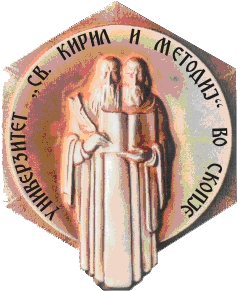VOL 64_2014/048
ТРЕТМАН НА EHRLICHIA CANIS КАЈ КУЧЕ ОД РАСАТА ГЕРМАНСКИ ОВЧАР
Елена Бунтевска1, Благица Трајаноска1,Мартин Камчески1 ,Бојан Стамадџиовски1
1Универзитет Св.Климент Охридски – Битола, Р.Македонија , Ветеринарен Факултет – Битола, Р. Македонија
Апстракт
Ehrlichia canis е најчест етиолошки причинител кај кучиња и е познат по предизвикување на кучешката моноцитна ерлихиоза, системско нарушување кое се манифестира со треска, хеморагични тенденции поврзани со тромбоцитопениа и тромбоцитна дисфункција и нерегенеративна анемија1. Болеста се пренесува преку плунката на кафениот кучешки крлеж, Rhipicephalus sanguineus и е широко распространет во светот. Во овој случај опишана е дијагнозата и третманот на кучешка моноцитна ерлихиоза кај машко куче од расата Германски овчар, околу 5 години старо со знаци на епистакса, депресија, губење на телесната маса и носен исцедок. После негативниот резултат за присуството на интрануклеарните морули во крвниот размаз, беше направено сликање со компјутерска томографија и магнетна резонанса за да се направи диференцијална дијагноза помеѓу кучешката моноцитна ерлихиоза и интраназалните тумори. По извршувањето на комплетната крвна слика , крвното испитување покажа тешка нерегенеративна анемија [клеточен волумен (PCV) : 9.6 %] и ниско ниво на хемоглобин (3.2g/dl), тромбоцитопенија, леукоцитоза и моноцитоза. Тестот на крвта не ни даде позитивен резултат на интрацитоплазмични морули. Во овој случај IFA тестот беше негативен.
Клучни зборови: Ehrlichia canis, Германски овчар,СМЕ
EHRLICHIA CANIS TREATMENT IN GERMAN SHEPHERD DOG
Elena Buntevska1, Blagica Trajnovska1, Martin Kamcevski1 , Bojan Stamadziovski1
1University Ss Kliment Ohridski- Bitola, Veterinary medicine faculty, Bitola, R Macedonia
Ehrlichia canis is the most common etiological agent in dogs and is known to cause canine monocytic ehrlichiosis, a systemic disorder manifested by fever, hemorrhagic tendencies associated with thrombocytopenia and platelet dysfunction and non-regenerative anemia1. The disease is transmitted through the saliva of the brown dog tick, Rhipicephalus sanguineus, and has a worldwide distribution. In this case is described the diagnosis and treatment of canine monocytic ehrlichiosis in a male dog of German Shepherd`s breed, aged about 5 years, with signs of epistaxis, depresion, weight lose and nasal discharge. After negative result of intranuclear morulae in the blood smear, a computed tomography and magnet resonance imaging was made for differential diagnosis of canine monocytic ehrlihiosis and intranasal tumors.After performing a complete blood count, the blood examination demonstrated severe non regenerative ane-mia [packed cell volume (PCV): 9.6%] and low hemo-globin level (3.2g/dl), thrombocytopenia, leukocytosis and monocytosis. The blood smear doesn`t gave posi-tive result of intracytoplasmic morulae. Diagnosing of ehrlichiosis through blood smear analysis is difficult because intracytoplasmic morulae are only occasionally seen during the acute phase of the disease. The IFA test was negative in this case.
Key words: Ehrlichia canis, German Sheeperd Dog, CME
Languages:
Pages:



